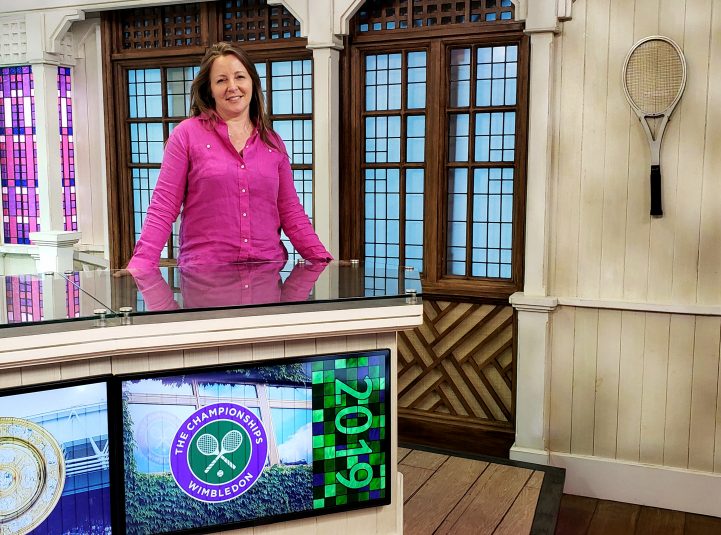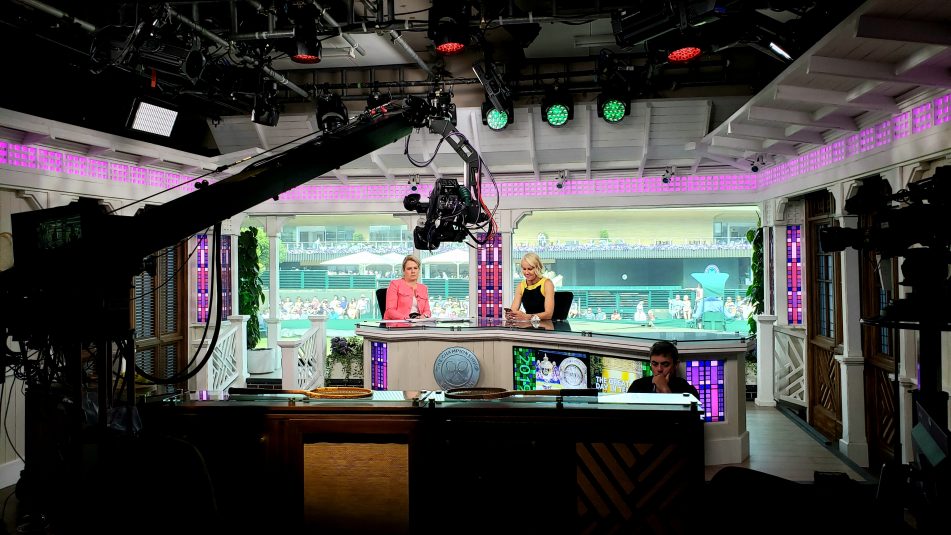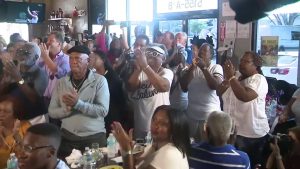Live From Wimbledon: ESPN Shines Spotlight on Coco, Preps for Five-Week US Open Run
Dramatic rise of the American teen keeps production team flexible
Story Highlights
The Wimbledon Tennis Championships are heading into their final weekend, but, from day one, the event has been filled with dramatic storylines for ESPN. Right out of the gate, 15-year-old American Coco Gauff (the youngest qualifier ever) upset U.S. tennis legend Venus Williams and then managed to have a week for the ages before losing to Simona Halep in the round of 16. And, for the production team at ESPN, it let them innovate and also help out ABC News and Good Morning America.

ESPN’s Joalin Goff says the team at Wimbledon is focused on activities at the AELTC while also planning US Open operations.
“The big thing for us has been the Coco Gauff story,” says Joalin Goff, manager, remote operations, ESPN. “It was pretty intense, and we not only serve our machine but have a lot of people with ABC and Good Morning America. It has been really great in serving the interest in women’s tennis.”
Goff credits ESPN producer Willie Weinbum and VP, Production, Jamie Reynolds with working together to find the best solution to allow ABC’s GMA team and broadcaster Robin Roberts to do a live interview from New York with Gauff and her family, who were located in Studio 12 at the Wimbledon Broadcast Centre. But Gauff’s accomplishments provided a solid week-long storyline.
““We had our first Sunday production meeting with talent, and, as we described the women’s field, it was just a wide-open mess, quote-unquote, and we were challenged to say what’s going to come out of this and who is going to grab hold of the tournament,” says Reynolds. “All of a sudden, we had that Monday-night episode between Coco and Venus, and that became an incredible story to split things up. And then you had it repeat again on Wednesday. And then she came back again on Friday and did it again. You can’t believe the energy, enthusiasm, and excitement that was generated. This wasn’t just a one-day thing; this was a week. And to see her maintain the composure and dynamic and competitiveness, it was terrific.”
As Gauff captured the attention of not only tennis fans but sports and non-sports fans alike, an additional layer was provided by her extended family back home, gathering at the family’s Paradise Sports Lounge in Delray Beach, FL, to watch the matches.
Says Reynolds, “We started to see on social media that there were some people there posting moments watching her matches, and so we took advantage of that. Some of the people there shared their videos with us, and it was raw in a very organic way, a real-time, unprocessed appreciation for Coco’s journey.”
Coverage of the watch parties evolved over Gauff’s run: a SportsCenter crew began shooting the family and friends and eventually deployed a TVU system to transmit signals to Bristol and then onward to ESPN’s Wimbledon control room.
The TVU system allowed the coverage to be more intimate than, say, a wide shot of the group, which can seem more like a shot from a security camera than from a broadcast camera.
“The trend for us has been a return to the concept of having somebody embedded in the moment so you are there with those who are genuinely experiencing and enjoying that celebration,” says Reynolds. “How can you capture that moment and share it with an audience, so it doesn’t just feel like you are observing it?”
The efforts paid off ratings-wise. Gauff’s match on July 5 reached a 1.9 rating, which Reynolds says bested the ratings for the men’s final last year.

ESPN’s main studio at Wimbledon
“How do we continue to refresh people on what happened? We have the Breakfast at Wimbledon show Thursday, Friday, Saturday, Sunday before the actual matches themselves,” he says. “And we’ve got some pretty good semis lined up.”
Goff says another big story this year was the roof addition to the No. 1 Court. With two courts having a roof, match postponements due to weather or darkness, which can cause havoc with scheduling the rest of the tournament, are no longer an issue.
“It’s helped out a lot,” she says.
Other enhancements include a two-point aerial camera system from ACS. Located on the golf course across the street from the AELTC grounds, it captures aerial tracking shots to provide a fresh perspective of the grounds and courts.
“They also moved the hoist camera to the north side, and it gives a completely different texture to venue coverage,” Goff explains. “And we still have our portrait set at the Orchard Pavilion on top of Henman Hill.”
Reynolds adds that the new hoist camera position amplifies what is happening on Henman Hill, a focal point for many of the fans onsite.
“You’re seeing the big screens and the relationship between the two roofed courts,” he says. “It’s a fascinating grandeur that I don’t think the club has seen in a while. It has always been there, but the fresh perspective offers a lot to the audience.”
This is year two of Wimbledon Broadcast Services’ handling the host production, and Reynolds says the WBS team has deployed additional robotic cameras around the practice courts and most of the other courts as well.
“We’re starting to recognize that there may still be areas that we can use ENG cameras to amplify and personalize,” he adds. ESPN currently uses four ENG crews, two dedicated to on-court coverage that is unique and doesn’t look like an iso-camera shot.
“The other two ENG cameras are running around doing feature work, the Breakfast at Wimbledon shows, or following players off court,” says Reynolds. “We want to get that unique ESPN access that we can feather through our 150 hours of coverage.”
While Goff and the ESPN tennis team wrap up the action at Wimbledon, their attention is already (as it is has been for most of the year) on the US Open, which begins at the end of August. This year’s US Open efforts will include only two of the U.S. Open Summer Series tournaments (in Canada and Cincinnati), along with the qualifying and fan week.
“When we look at our broadcast calendar, we run from Canada to Cincinnati to qualifiers, then two weeks of the main draw,” says Reynolds. “That’s a five-week straight run. We prefer that five-week run because we’ll have consistency throughout.”
Adds Goff, “The behemoth that is the US Open is all-hands-on-deck, but we are focused on the project at hand. Each of the three majors we cover is like a little Olympics: they are 14 days long, and we do 150 hours of live coverage for each. And then the US Open preparation is a full-time job, but we interweave it with everything we do.”

